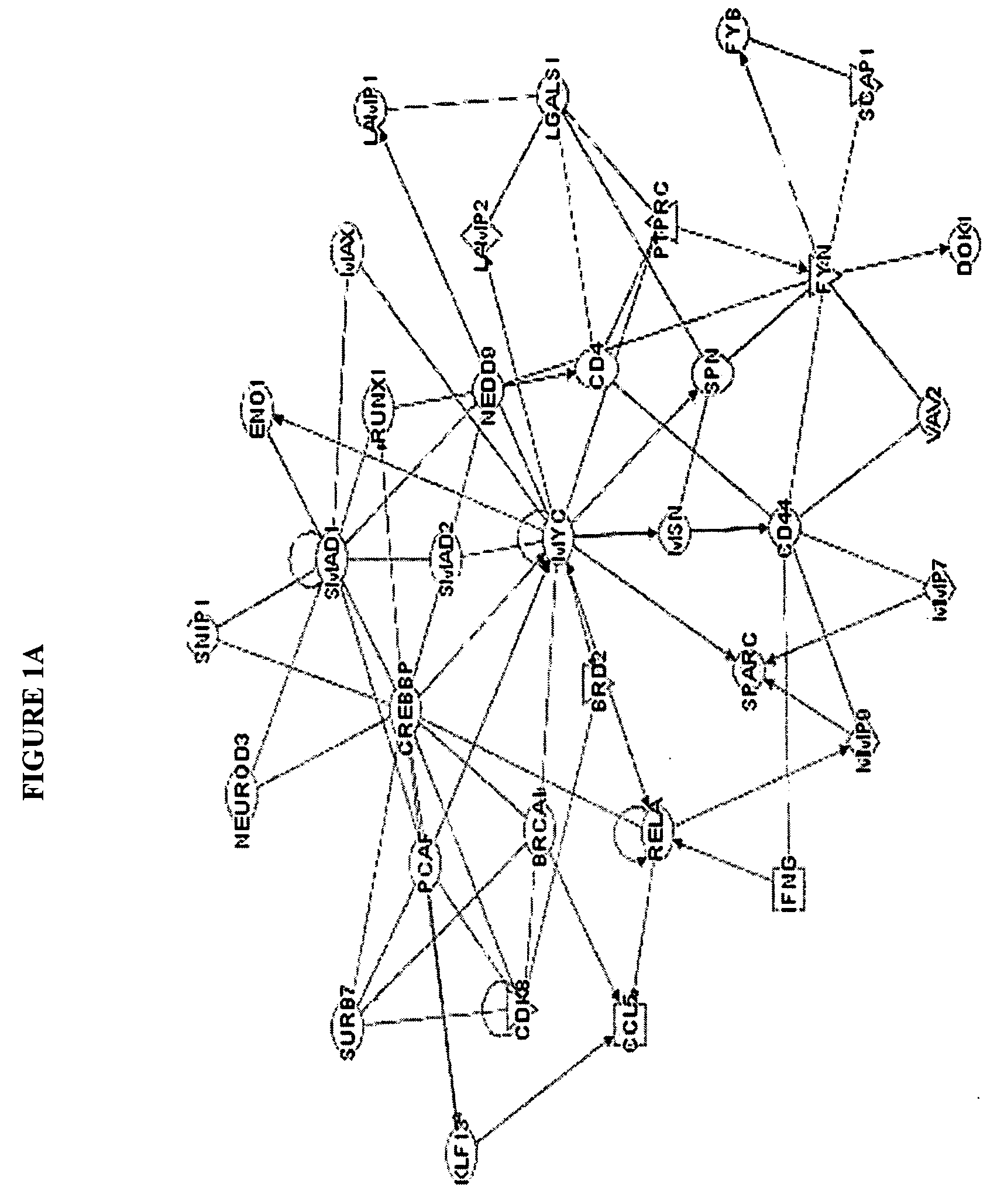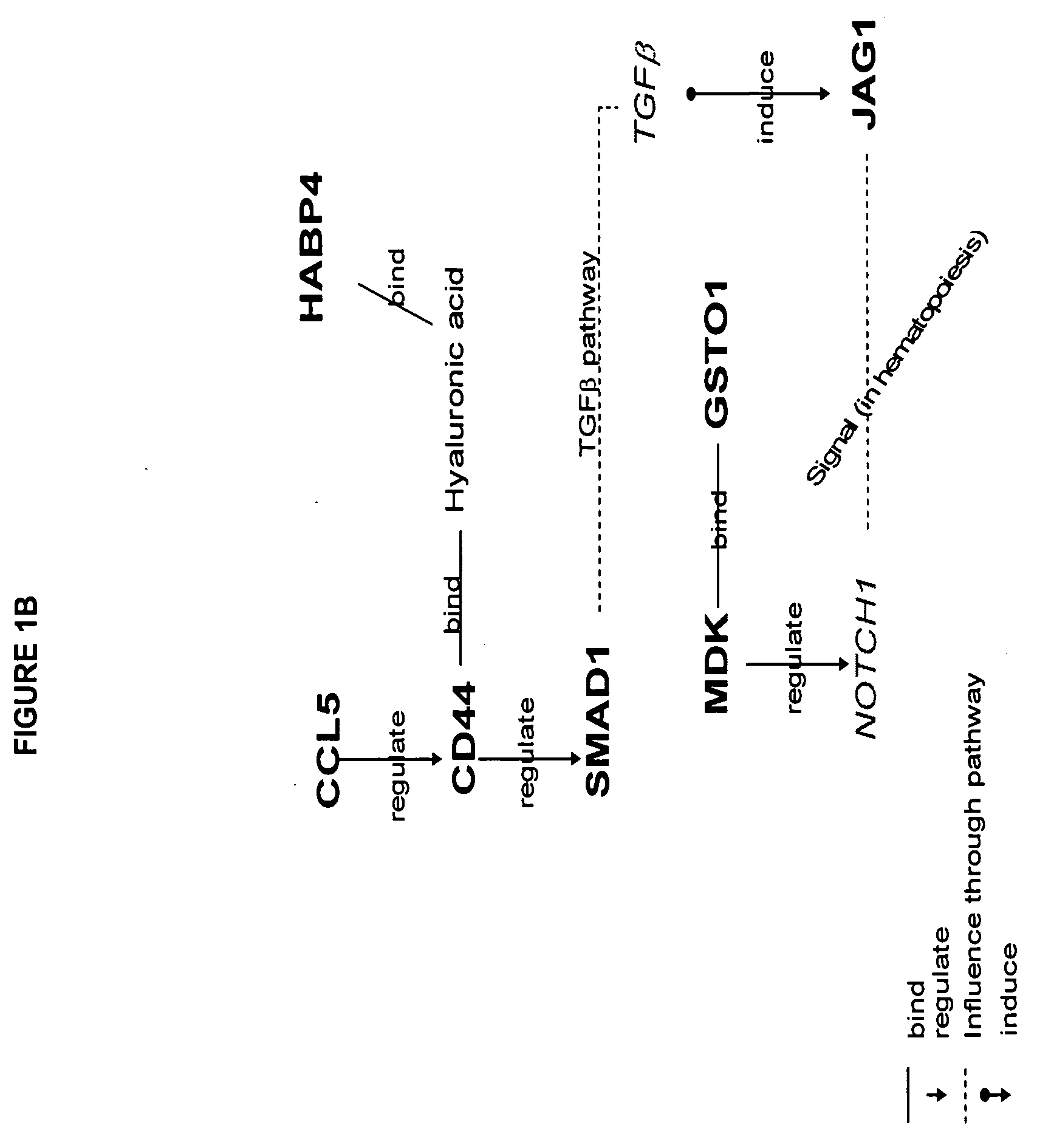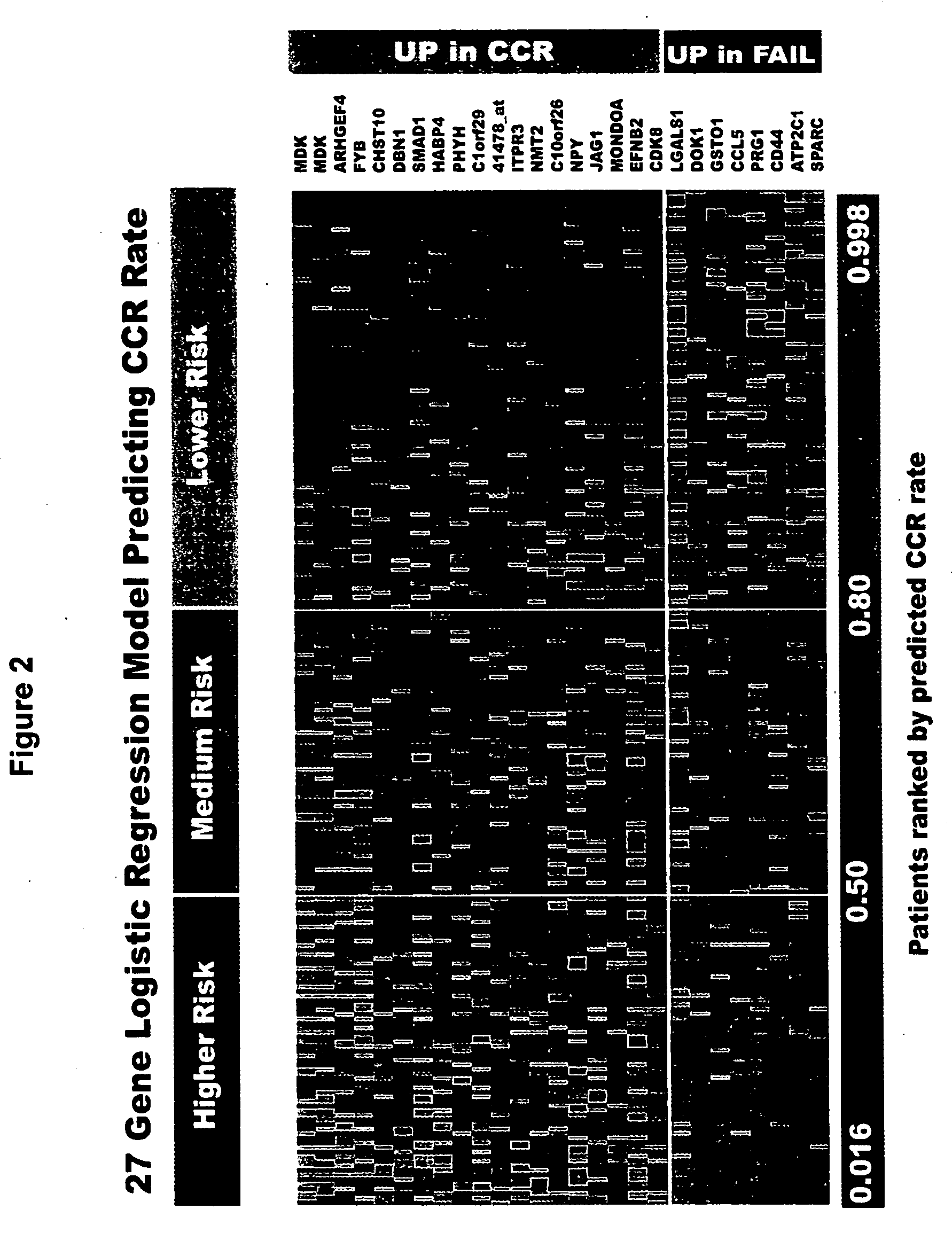[0019] In certain embodiments, the amount of the prognostic gene is determined by the quantitation of a transcript encoding the sequence of the prognostic gene; or a polypeptide encoded by the transcript. The quantitation of the transcript can be based on hybridization to the transcript. The quantitation of the polypeptide can be based on antibody detection. The method optionally comprises a step of amplifying nucleic acids from the tissue sample before the evaluating (pcr analysis). In a number of embodiments, the evaluating is of a plurality of prognostic genes, preferably at least three prognostic genes, and more preferably at least eight genes as otherwise described herein, preferably as many as 26 genes. The prognosis contributes to selection of a therapeutic strategy, which may be traditional therapy for B-precursor ALL, or a more aggressive therapy based upon a traditional therapy or non-traditional therapy.
[0020] The present invention is directed to methods for outcome prediction and risk classification in leukemia, especially B precursor acute lymphoblastic leukemia (ALL). In one embodiment, the invention provides a method for classifying leukemia in a patient that includes obtaining a biological sample from a patient; determining the expression level for a selected gene product, more preferably a group of selected gene products to yield an observed gene expression level; and comparing the observed gene expression level for the selected gene product(s) to control gene expression levels. The control gene expression level can be the expression level observed for the gene product(s) in a control sample, or a predetermined expression level for the gene product. An observed expression level (higher or lower) that differs from the control gene expression level is indicative of a disease classification. In another aspect, the method can include determining a gene expression profile for selected gene products in the biological sample to yield an observed gene expression profile; and comparing the observed gene expression profile for the selected gene products to a control gene expression profile for the selected gene products that correlates with a disease classification, for example ALL, and in particular B precursor ALL; wherein a similarity between the observed gene expression profile and the control gene expression profile is indicative of the disease classification.
[0021] The disease classification can be, for example, a classification preferably based on predicted outcome (remission vs therapeutic failure); a classification based upon clinical characteristics of patients, a classification based on karyotype; a classification based on leukemia subtype; or a classification based on disease etiology. Where the classification is based on disease outcome, the observed gene product is preferably a gene product selected from at least three of the following group of eight gene products, more preferably four, five, six, seven, or more preferably all eight gene products: midkine (neurite growth-promoting factor 2), CHST 10 (carbohydrate sulfotransferase 1or HNK1-sulfotransferase), PHYN (phytanoyl-CoA hydroxylase), IF144L (Interferon-induced protein 44-like, C1 or f29), OPAL 1, CDK8 (cyclin-dependent kinase 8), DOK1 (docking protein 1-62kD and downstream of tyrosine kinase 1) and ATP2C1 (ATPase-Ca++ transporting type 2C member 1). Alternatively, the invention may rely on measuring the previous eight gene products or those eight gene products in addition to at least one or more of the other gene products within a longer list of 26 gene products which appears in Table 1, below. Measurement of all 26 gene products set forth in Table 1, below, may also be performed to provide an accurate assessment of therapeutic intervention.
[0022] The invention further provides for a method for predicting therapeutic outcome in a B precursor ALL leukemia patient that includes obtaining a biological sample from a patient; determining the expression level for selected gene products associated with outcome to yield an observed gene expression level; and comparing the observed gene expression level for the selected gene product(s) to a control gene expression
 Login to View More
Login to View More 


